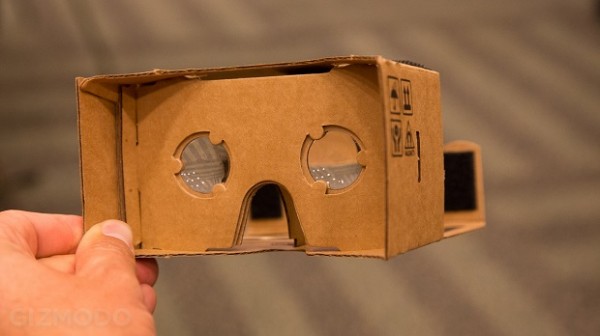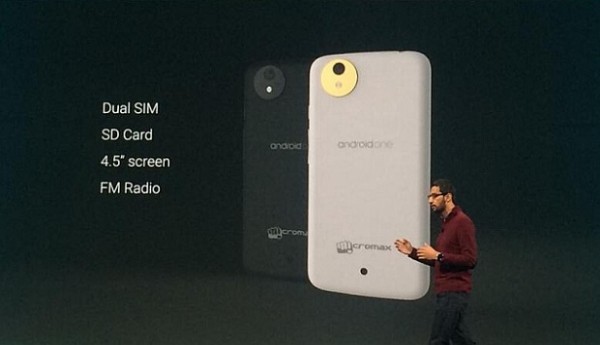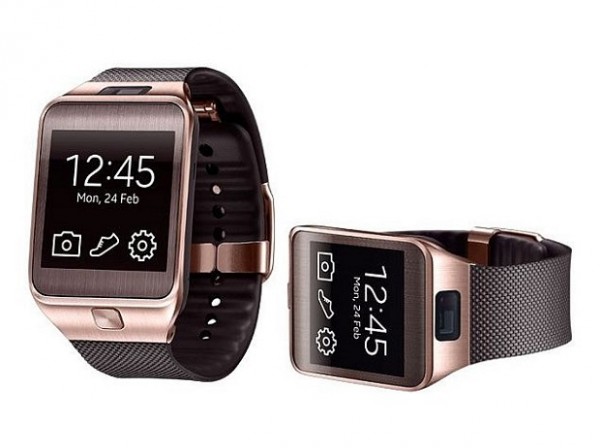
Google I/O has arrived and the people whether they are nerds or geeks or freaks are in a tizzy over the new product lineup that the Big G has brought in its wake. A long list of discoveries and...

It may seem that everything related to the search giant contains the latest technological advancements, but Google Cardboard is really just what its name says. Still, it works well as a virtual reality headset, at a fraction of the price of its competitors.
It only takes 45 seconds to assemble Google Cardboard, so the “device” is not even that difficult to set up. Since Sony has its Morpheus headset and Facebook now owns Oculus VR, it was about time Google got involved in virtual reality, as well. Google Cardboard, in tandem with your smartphone, can provide a virtual reality experience at a better resolution than the first Oculus Rift. Of course, that depends on how capable your smartphone is, but given that some devices sport quadHD displays nowadays, seeing things clearly through the cardboard contraption shouldn’t be that difficult.
Obviously, a companion Cardboard app is needed for creating the virtual reality environment. Firing up the app is apparently easier to do if a NFC tag is used. Besides the tag, the Google Carboard VR kit also includes:
Not even 24 hours have passed since Google announced the Cardboard VR kit at its I/O conference and Dodocase already started selling it on its website for $20. Another version costing $45, made from possibly 3D printed materials, should be available in the next 4 to 6 weeks.
Don’t expect Google Cardboard to have a huge impact, though. People are skeptic about it and claim that Google hasn’t really done anything revolutionary. While that might be true, people still have to admit that the product is highly functional. I’m not saying that this is a never-seen-before product, but I do appreciate the search giant’s attempt to make the latest technologies more affordable.
Also, you should expect to see some DIY guides on how to make these on Instructables, even though building such a kit is quite intuitive. In other words, if you have the necessary materials and a bit of a spare time, and don’t want to spend $20 on an official kit, you could always build the kit at home.
For the time being, the Google Cardboard VR kit only works with the search giant’s own apps, but if software developers will express their interest, there will definitely be a broader compatibility in the future.
Be social! Follow Walyou on Facebook and Twitter, and read more related stories about the Vertigo Simulator and Sony’s virtual reality headset for the PlayStation 4.

As if the recent price cuts of Android smartphones weren’t enough, the search giant intends to make such mobile devices even more affordable. The Android One program marks the launch of qualitative Android phones with a price tag of under $100.
In comparison to the latest flagships, smartphones from China and India are already quite affordable, even though the build quality leaves a bit to be desired sometimes. Google means to make no compromises in terms of quality, while still offering Android handsets at decent prices.
Sundar Pichai, senior vice president of Android, Chrome and Apps, announced during a keynote at the Google I/O conference that the Android One program will include a reference design on which device makers will build their devices.
Indian mobile device makers Micromax, Karbonn, and Spice are the first three companies to join the Android One program. Pichai even showcased a Micromax Android One smartphone while on the stage. The dual-SIM handset features a 4.5″ display (more than what Samsung Galaxy S2 had 3 years ago), FM radio and a microSD slot for extending the storage capacity. The amount of internal memory is currently unknown.
Google’s ultimate goal is to provide an Android smartphone to the remaining 5 billion that don’t currently own one. This is a bit of an impossible thing, as most people from emerging countries still won’t be able to afford getting an Android phone, regardless of how cheap it gets. Dreaming is not wrong though, and setting such a high goal will encourage the search giant to strive for progress continuously.
Pichai admitted that he had been using a Micromax Android One smartphone for a while now, and even expressed his excitement about the device, despite being used to high-end devices. The whole idea of having such decent specs for under $100 would’ve seemed unreal a few years ago, but the advancements in technology (I’m referring here both to materials and production procedures) could turn this into a reality really soon.
Hopefully, more and more device makers will join this program, and will realize that selling affordable devices in large quantities is a lot better both for themselves and for their customers than selling very expensive smartphones to a limited few. Google is definitely a pioneer, but it won’t be able to do it without the support of other manufacturers.
Be social! Follow Walyou on Facebook and Twitter, and read more related stories about the SoCs for affordable Android tablets that Intel and Rockchip are working on, and the $100 HP 7 Plus Android tablet.

Not long ago, it looked like the South Korean tech giant would keep its family of smartwatches Android-free, but according to recent rumors, the company might have a surprise for us in the form of an Android Wear smartwatch, which would be launched at Google I/O 2014.
After launching 3 Tizen OS wearables and leaving the impression that it was severing its relationship with Google, Samsung returned the search giant to the BFF status. The Android Wear smartwatch that Samsung will launch on June 25 and 26 is said to be similar in functionality to the ones running Tizen OS, and the design shouldn’t differ much, either.
In terms of hardware, rumor has it that there will be two versions, one based on Samsung’s own chips (a new version of Exynos, I assume), and another based on Qualcomm. At the time being, it is unknown which of the two will be showcased at Google’s event. If I were to take a guess, I’d say that the Korean company would take more pride in launching a device based on its own chip.
While the Korean company didn’t specifically say that it has an Android Wear smartwatch in the works, it did mention that it’s continuously looking to innovate, and a device based on a version of Google’s mobile operating system that’s specifically tailored for wearables would be a firm proof of that. Moreover, sources close to the company stated in an interview with Cnet that there is a tiny possibility that all the attendants at Google I/O 2014 might receive a Samsung Android Wear smartwatch.
Unlike LG and Motorola, which will also be launching Android Wear smartwatches at Google’s event, Samsung has a lot more experience in this field, so it’s probably not wrong to assume that its product will outrank the others. On top of that, Samsung has made wearables based on more than just Android, so it has a different perspective on how things work.
Google definitely enjoys teasing us. Android Wear, the new version of its mobile OS built with wearables in mind, has been launched in March, but there are still no commercially available devices based on it. Things might change at the end of this week, when we’ll get to see at least to smartwatches running Android Wear. As far as Samsung’s new smartwatch is concerned, it remains to be seen if the rumors are true.
Be social! Follow Walyou on Facebook and Twitter, and read more related stories about Moto 360′s price, and LG’s G Watch.